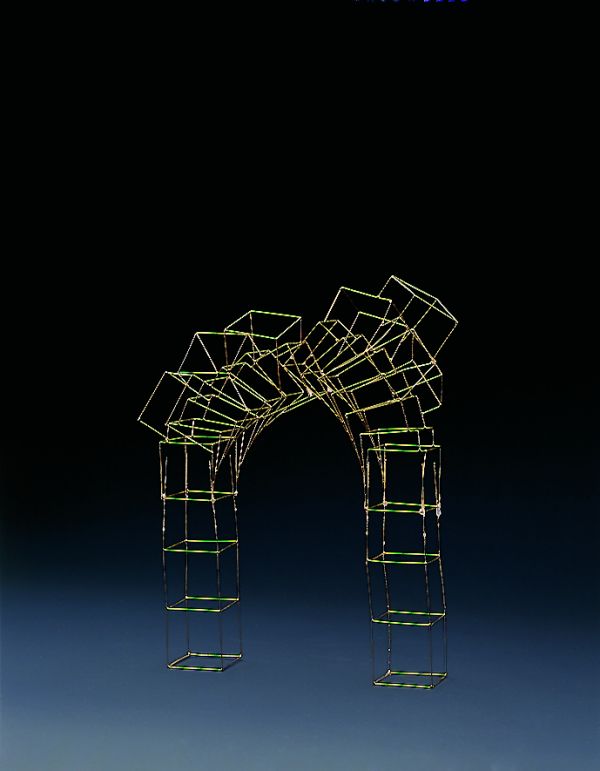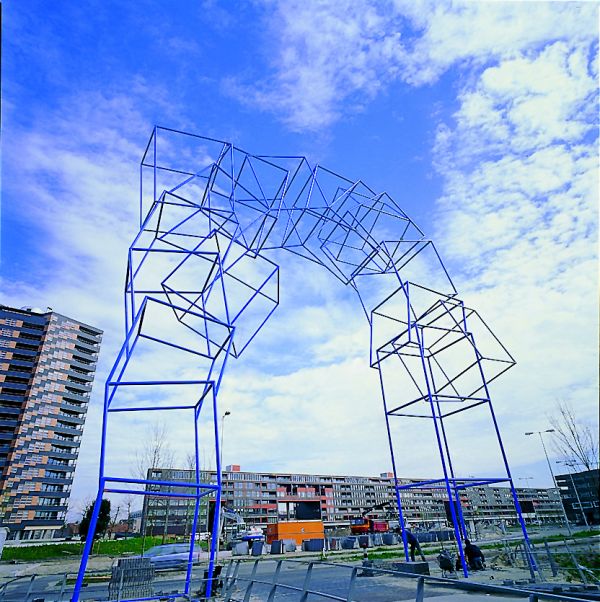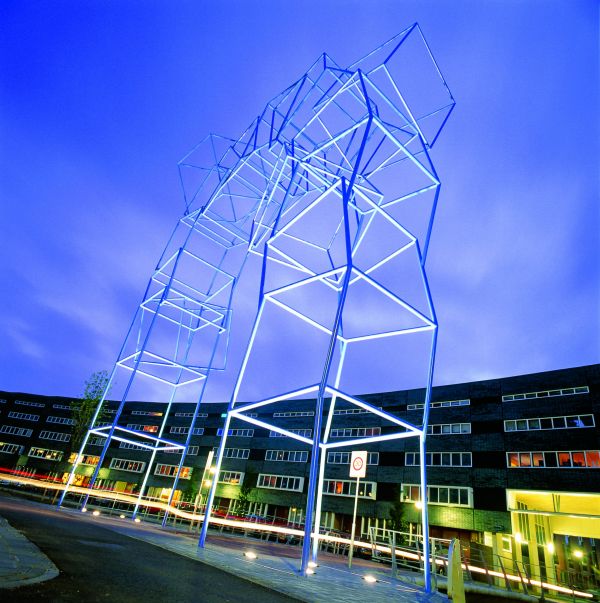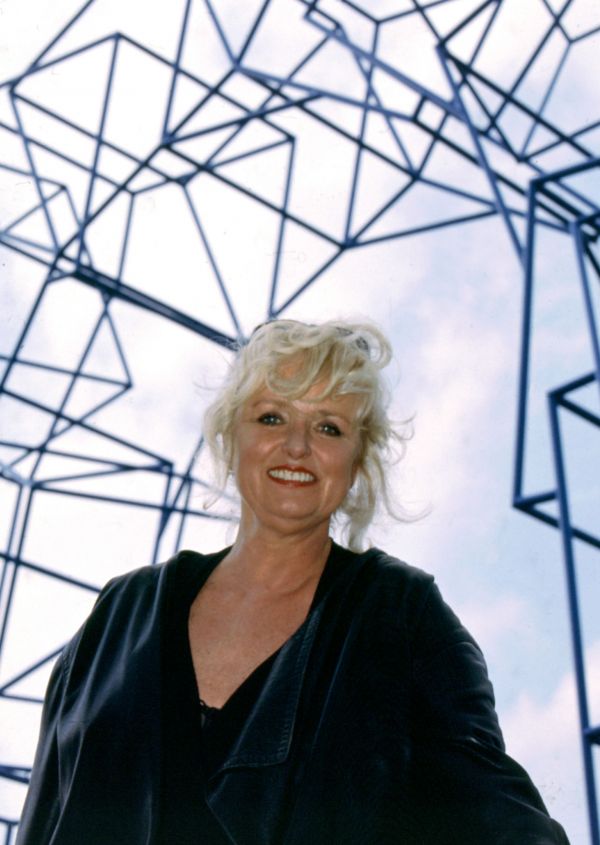Cubic Gate l’Arche
1999. Amsterdam, The Netherlands
In the Middle Ages, the City of Amsterdam was accessible by gates only. Unfortunately, many of these gates have disappeared during the consecutive expansions of the city.
In the 16th and 17th century, Amsterdam was a very dynamic city which was extended in rings, whereby previous defence walls were torn down immediately for reuse of the stones. However, some of the city gates survived and still adorn the city. The new cubic gate in De Aker is a gift from four commissioners who wanted to symbolically hand a historical reference back to the city! Of course, in a modern design: made of steel – transparent, subtle, including a subtle sense of humour.
The works created in my Atelier often form a source of inspiration for monumental works. Examples for this are the concepts – basically without a scale – of cubic waterfalls and wall installations of cubes. Moreover, works of arts were created on the scale of jewellery, ranging from table sculptures and relief sculptures to large works of monumental size: the cubic gate and the Mermaid, the lying woman in abstracto.
It was also on the basis of such autonomous works that the Cubic Gate was developed: a double fountain of cubes which forms a gate. This concept originated from the shoulder sculptures which are called ‘Ponti’ (bridges). It was a challenge to create such a figuration in a large size and to realize it as a crystalline gate.
The gate is set up like an open sculpture of cubes, or parts of cubes piled on top of each other or sometimes hanging down from each other. The cubes are made of round steel tubes. Due to the ever-changing connections, the geometry had to be very precisely specified. Following that, the interference between tubes could be calculated and realized. hgg in Opmeer, the Netherlands, had developed machines which could cut the tubes three-dimensionally, including the diagonal sides for the welding. Each cube measures 3 x 3 x 3 meters, and the tube diameter is getting smaller the higher you get. The steel elements were welded in large parts, then hot-dip galvanized and powder-coated in ‘Marijkeblauw’.
The gate combines elegance, transparency, mass and spatiality. From an artistic point of view, slender dimensions are most popular to achieve a balance, apparently tenuous. This turns the sculpture into a technical masterpiece. It is thanks to the engagement of spatially thinking and working engineers that such a piece of art is realized! The technical complexity of this sculpture remains tangible in the end result. Visually it is almost a miracle that all these cubes can be piled on top of each other and nonetheless remain stable, while the whole continues to look very tender – a small masterpiece by engineer Mick Eekhout and his company Octatube in Delft.
In general, when one looks up from a distance or from underneath an object, one’s perspective changes. Identical sizes seem smaller. By using ever thinner tubes for the higher cubes, this visual effect is enhanced. By doing so, the vertically oriented movement – which is important in this work of art, too – is emphasized. At night this is also achieved through a continuous bottom surface illumination, sunken into the pavement.
As all edges, seen from various points, present varying views, the dynamic fountain effect of the gate sculpture can be enhanced by lighting the whole in a special way. Due to the central location in the borough it is desirable to make use of a theatrical and soft light. By doing so, the colour of the sculpture is enhanced in the evenings and at night. At the same time, a second illusionary sculpture – an abstract interplay of shiny lines – is being developed. The most beautiful effect is achieved by slowly altering the intensity of the light. For this task a light expert was brought in.
If art is seen as ‘a window in space’, the Cubic Gate can be seen as ‘a portal in space’.



